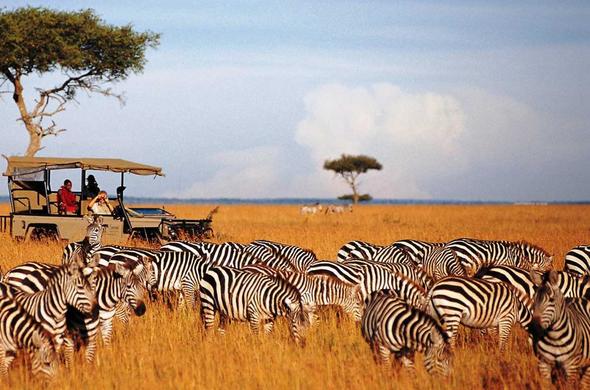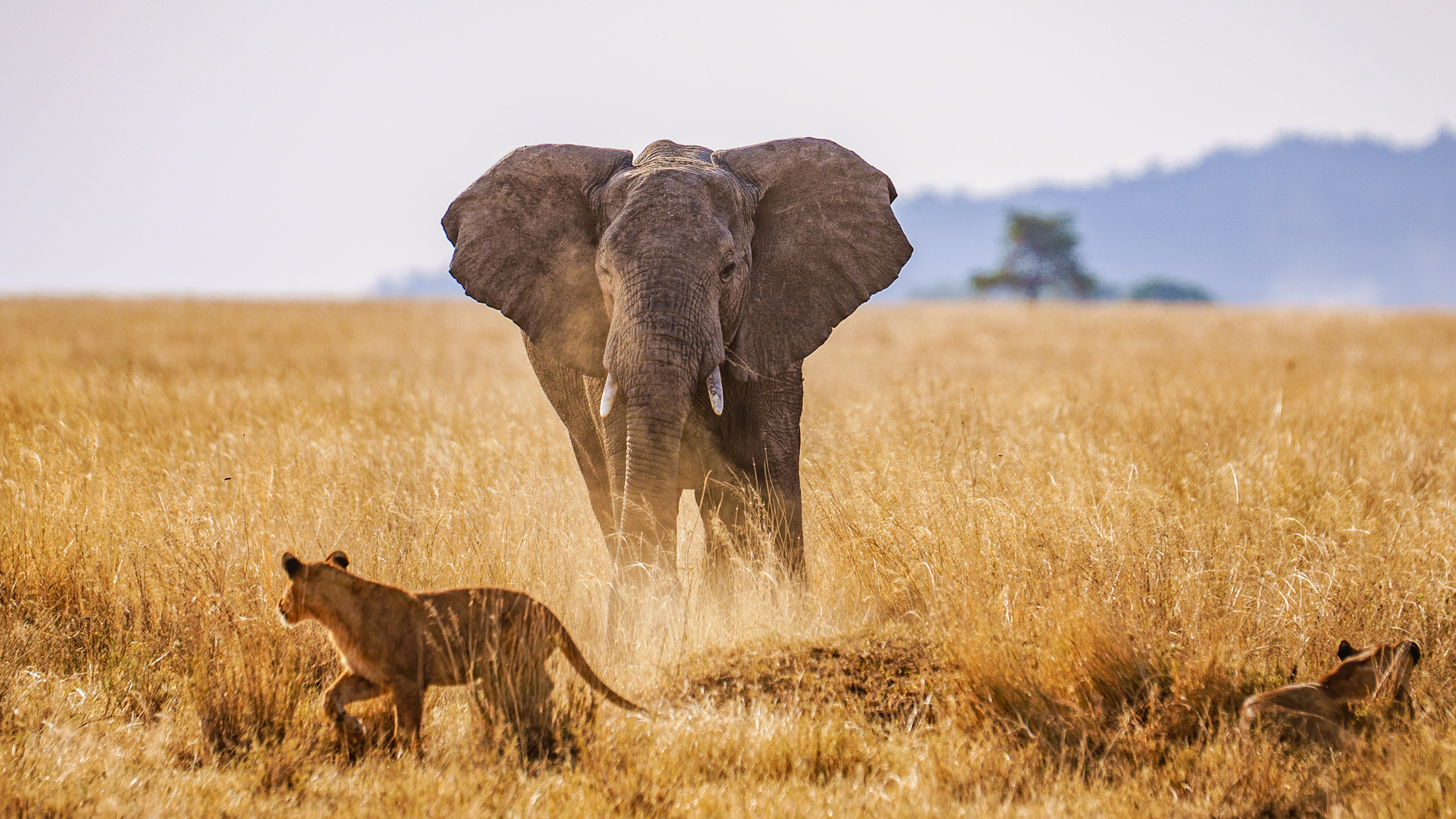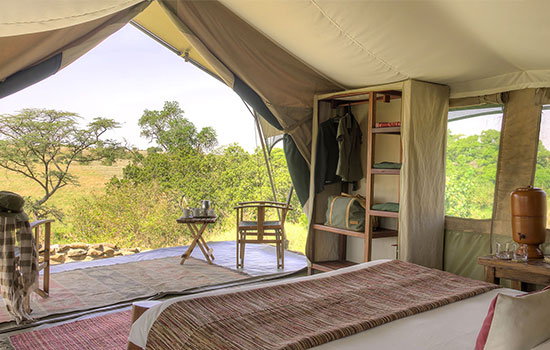Top 13 Travel Tips for a Masai Mara
Top 13 Travel Tips for a Masai Mara Budget Safari in Kenya | Blog | Sojourn Safaris Ltd| Travel Tips
Get Best Masai Mara travel tips before your go. The Masai Mara budget lodge safari packages are offered in the vast Maasai mara game reserve located some 240km southwest of Nairobi in Kenya. Immerse yourself in an intriguing adventure through the most densely populated masai mara game reserve with all sorts of wildlife. The mara is famous for the large numbers of the big five, the ugly five animals and the millions of grazers and apex predators. Nothing prepares you for the thrill of the few days you will have in the mara in terms of viewing animals and seeing the local cultures and friendly guides. The drive to Masai mara by road from Nairobi takes anywhere between 5 to 6 hours but the roads are all tarmacked. Here are 13 things to know before going on a Masai mara budget safari.
- Masai Mara, the Top Wildlife Cauldron of the World- Your Budget Safari Climax
- Masai Mara the Most Popular Natural Game Viewing Amphitheatre of the World on a Budget
- Places to Stay in Masai Mara on budget Shared Package
- The Masai People of the Mara – Make a Budget tour to a Masai Village in the Mara
- Bird Watching in Masai Mara on Budget or Lodge Safari
- What to Wear for Masai Mara
- Bugs and Insects in Masai Mara
- How Much Is The Tip To Give to Driver Guides in Masai Mara Safari
- Where To Change Money To Local Currency
- Local Currency To Carry Around For Expenses On Mara Safari
- Yellow Fever, Covid 19 and Malaria Prevention on Safari
- Visa Application for a Safari to Masai Mara Kenya
- Transport
1. Masai Mara, the Top Wildlife Cauldron of the World- Your Budget Safari Climax
The mara is known for its great abundance in wildlife. It is estimated that there are more than 5 million animals in this 1510sqkm area of land. In comparison to the Serengeti, which is 13 times bigger, the Masai mara has way higher density of wildlife per square mile. This means that you are surrounded by wildlife in every direction you look, literary. Staying in a budget tented safari camp in mara means, that wildlife get to roam freely in your camp and you sometime may see a rhino right outside your tent.
The grazers including the elephants, zebras, antelopes, gazelles and buffalos form the vast majority of wildlife in the mara. Their vast numbers ensure that they can support a larger population of big cat predators like lions, cheetahs, leopards, hyenas and jackals. Nowhere in Africa will you see more than 4 prides of lions in a single day other than the mara. The prides are sometimes so large that they have over 20 individuals. The leopards are easier to see and the rhinos though rare are relatively easier to spot with some little effort. An affordable budget safari in Masai mara might present to you over 25 lions and a couple of leopards.
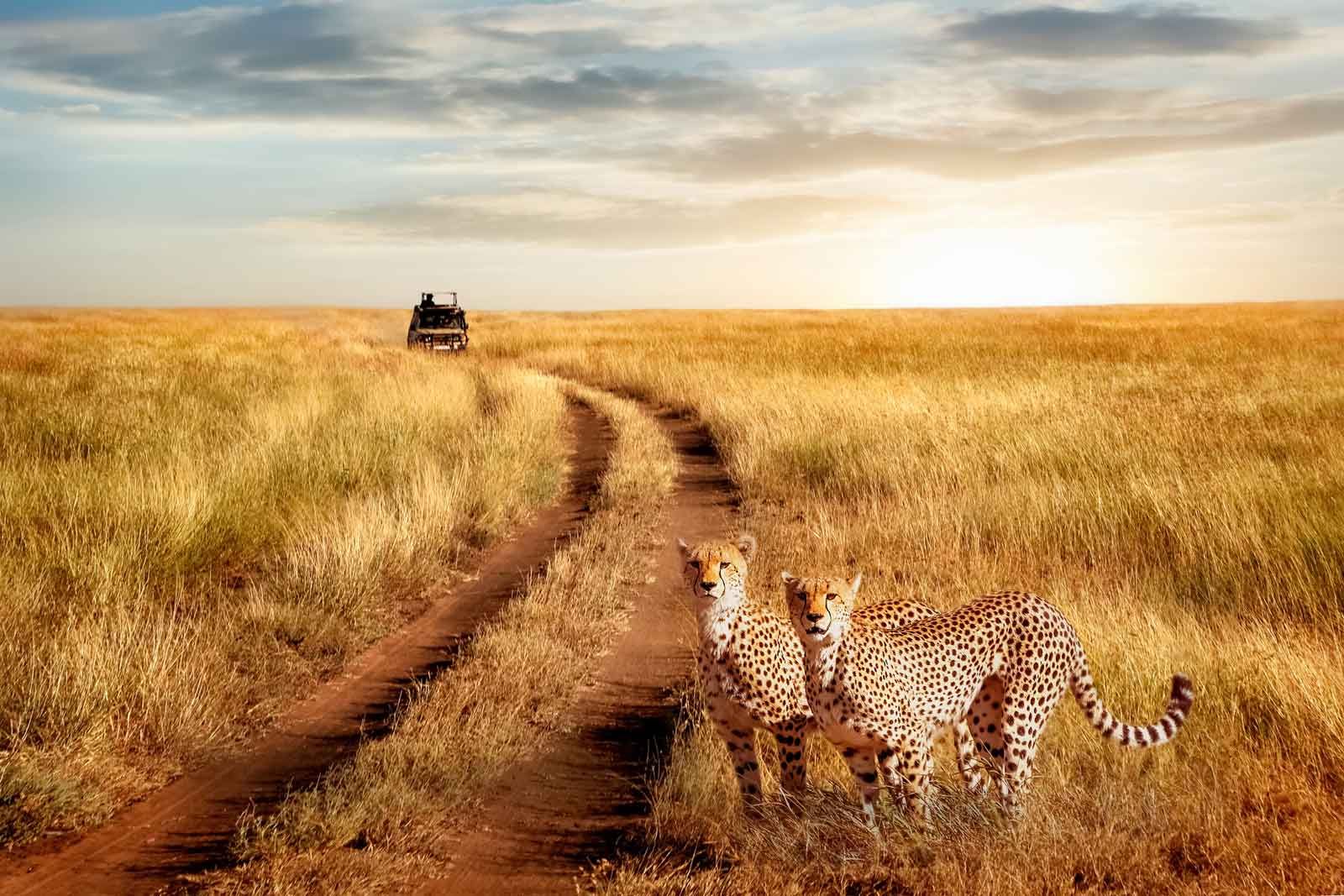
You are more likely to see a lion chase or a cheetah run in Masai mara than you are in the Serengeti, its next-door neighbor in Tanzania. The fact that so many animals are located in a smaller area earns that your game drives are rich in wildlife. In the mara, you will see the big five animals (lion, buffalo, leopard, elephant, rhino) in a single day, guaranteed. The ugly five are also common including the wildebeest, common warthog, spotted hyena, marabou stork and the vulture. You would be so unlucky to end a 3 day Masai mara budget safari without see in the big five animals and others like giraffes, zebras, Thompson gazelles, hippos, hyenas, jackals, topis, waterbucks, grants gazelles, elands, crocodiles, aardvark and many more.
As if that was not enough, add into that mix, the great wildebeest migration where more than 1.5 Million animals move in and out of Tanzania and Kenya in a circular exodus 300 mile loop. This event happens between July and October in Kenya. The migration consists of 1.1million wildebeests forming the majority in the group. They are followed closely by the zebras which number around 250,000 and the rest are gazelles. The great wildebeest migration route is cyclic in a clockwise direction. The wildebeests start the migration starts from Ngorongoro plains shortly after the February breeding season. During the 1-month breeding season, over 250,000 calves are born. These calves are born to run and within an hour can outrun a leopard. The calves have a brown coat as compared to the mother’s grey and black coat. This makes them distinct and very colourful among the green plains of Serengeti and Ngorongoro. Unfortunately, it also attracts the largest party of predators from lions, cheetahs, leopards to hyenas. It is a feeding frenzy before the animals can out run them and head north for the migration. Such wanton killing of young ones might look calamitous, but it is also natures way to keep a balance on the populations of these nature’s lawn mowers of the plains.
The herds move into the Seronera area of Serengeti as they move northeastwards towards Masai mara. By July, they are entering the mara where they will feed and move around for 3-4 months before the large herds return back home to Serengeti.
Any river they cross presents an opportunity to the big cats on the opposite riverbank. They, the predators will sit for days in a welcoming committee waiting for the beasts to cross. The Mara river crossing is your ultimate safari experience when thousands of the wary wildebeests literally pour into the overflowing river with a lot of drama.
On your second day of a 3-day Masai mara budget migration safari, the driver will take you to the mara river crossing to join part of the predators welcoming committee. Here, drama at high noon unfolds right in front of your eyes as thousands of wildebeests push and jostle for the river frontage. For hours, they will bleat neee neee neeh neeh but none will want to take the first jump. Down, below the sharp embankment is a raging flooded Mara river, in the water several small rock islands seem to float in the raging river. But Alas! These are no islands but 18feet long Nile crocodiles ready to snap their jaws on any unlucky soul. Such are the stakes of crossing the mara river that the wildebeests will stand their ground for hours before unwillingly making the jump.
New arrivals at the rear of the herd keep building the pressure on the now almost solid block of grey wildebeest and zebra brawn. They jostle and wriggle at the riverbank until the pressure on the front-runners is too much to bear. It only takes one mad individual to make the leap of faith into the water and the wall of wildebeest bodies is jumping, falling and tripping into the water like a breached dam wall. In their attempt to distract the crocodiles, they will jump 10 feet high into the air to land into the water with a great splash, sometimes on the backs of their friends who then suffer broken limbs and spines….it’s a carnage.
The mara river wildebeest-crossing stampede causes such a melee that the splash on the water is heard from the opposite bank. Thousands and thousands pour into the water and swim as fast as possible to the opposite bank. Crocodiles start to drift along the edges of the swimming wildebeest and zebra’s profile. Some are grabbed and drowned but most make their way across only to be met by the welcoming committee of lions and leopards on the opposite bank. It sure does not pay to be the first arrivals in a wildebeest migration. Many die here but even more survive to come back a year later, sure that their survival on the next exodus will be guaranteed by their sheer numbers…..until it’s your turn to take one for the team…and its curtains! Do not miss the mara river crossing when you go for a 3 days Masai mara shared budget safari whether in a group or solo.
2. Masai Mara the Most Popular Natural Game Viewing Amphitheatre of the World on a Budget
Your Masai mara private or shared budget safari package will take you to the most scenic and even plains ideal for game viewing. The mara is blessed with thousands of kilometers of undulating and unending plains fraught with millions of all types of wildlife. In what resembles the wheat fields of Ukraine, the Masai mara plains extend to the horizon in some light yellow and brown hues. There is little tree cover in most areas of the Masai mara game drive plains which means your game viewing drives are not interrupted by forests.
The gentle and expansive plains of Masai mara are at midday interspersed with the dark shadows of the small clouds. The shadows cast on these yellow plains resemble a leopard’s rosette coat and creates one of the most symbolic artistry of nature. It’s like the plains are declaring to the world what they are known for- wildlife viewing. Absolutely amazing.
From the early azure of the morning sunrise to the midday shadows on the plains and finally the sinking golden sunrays over the horizon at sunset; the Mara’s drama unfolds like a Chinese face fan. The Masai mara plains, wildlife, the sun and clouds act like a punctual cast in a natural theatric performance that unfolds right in front of your eyes daily. The lumbering dark silhouettes of wildebeests, giraffes and elephants against the downing sun at sunset presents you with the final act of this Masai mara daily theatre concert.
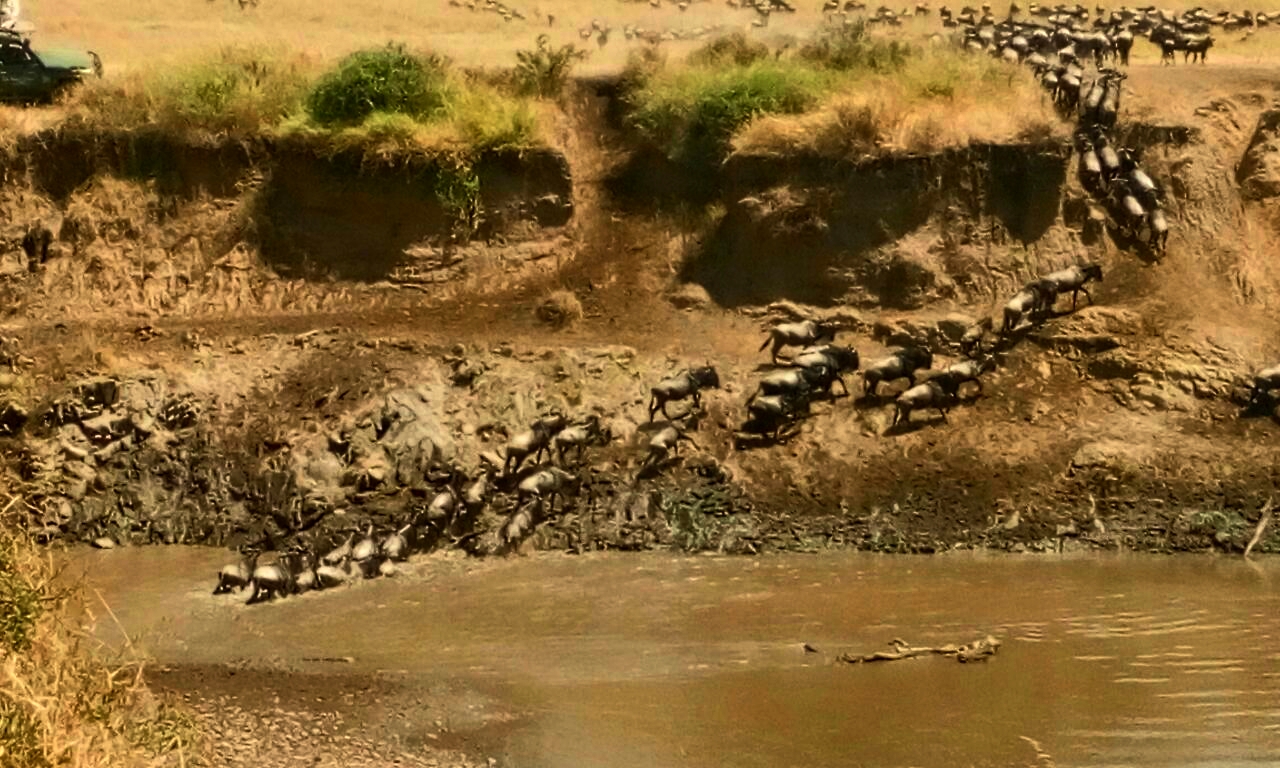
But you have to know how to appreciate the big and little things and happenings in the mara to enjoy a wholesome experience. Let your guide while on an affordable Masai mara private lodge safari package; show you the little insects, the fauna, let him explain the inter-play between the weather, the animals and the Masai people that make the mara ecosystem.
Your best bet to experience the best of the Masai mara plains is to do it in the air, and not in a noisy enclosed aircraft. You need to take a hot air balloon flight at dawn to really enjoy the silence, beauty and expanse of the mara plains. Masai mara group balloon safari rides start at 5.00am with a pick up from your lodge to the airstrip. The basket takes 12 pax and you are in the air just before sunrise. Feel the fresh, cool and crispy early morning air in the open hot air balloon. The only noise is the occasional blast of hot gasses and flame into the colourful balloon over your heads.
Every day, the sun reveals some stunning scenic and golden hue raising the curtain to the daily Masai mara concert. One by one you start to see the wildlife below including the majestic giraffes, the multitudes of wildebeests and the cacophony of gazelles. Startled by the silently moving shadow of your balloon, the animals break into a short run and stop to gaze up nonchalantly. Soon you see the whole expanse of the ground below, the millions of animals are now clearly visible as they lazily wake up to their daily routines.
This 1-hour balloon ride is your climax for a Masai mara game viewing experience. On descent, the team has a bush champagne breakfast to warm your insides. The breakfast leaves nothing to your imagination as you get to experience a 3-course meal in the bush. A glass of champagne to celebrate your experience is offered on landing. Later the team takes to an hour of game drive enroute back to your lodge for the rest of the day’s game viewing activities. A hot air balloon ride allows you to see the full expanse of the wildebeest migration herds and the lion prides. You also get a certificate of participation upon landing. It is highly recommended in your Masai mara affordable family lodge safari package or a senior citizen hot air balloon safari. A lot of American family safaris prefer to take the hot air balloon ride safari at the end of their stay in mara.
3. Places to Stay in Masai Mara on budget Shared Package
The mara has many accommodation options that you can choose from depending on your budget. One thing we agree on is that there is no need to break your bank trying to watch the big five animals. Moreover, the Masai mara safari planner has an option for all kinds of budgets from the high end $1,500 a night luxury camps to the budget tented camps for $40 a night and the basic ground camping options. In between these are hundreds of comfortable lodges.
You can contact a Kenyan Masai mara family safari planner in Nairobi directly and they will advice you on which accommodation options are suitable for you. The vast majority of people visiting the Masai mara usually stay in the budget tented camps, which are comfortable but utilitarian. All of these budget tented camps and camping grounds in Masai mara are located right outside the park boundary. There is no fence however and wildlife are free to move in and out of the reserve. Moreover, all game drives are done inside the Masai mara game reserve even for camp guests located outside the park.
The greatest advantage of using a Masai mara budget shared camp is that you get to share the vehicle and tents with total strangers. Meeting new people and making friends is part of these packages and the only sacrifice you make to enjoy a mara safari on a shoestring budget. The tented camps include a general tent equipped with a comfortable bed and clean beddings, you have a hot water shower area and a private WC toilet at the back of the tent. The furniture is basic safari seats and table and you have a balcony to yourself. All of these camps offer simple but fresh buffet meals at their common restaurant and have a bar that stocks the common spirits and beers in Kenya. An example of popular budget tented camps include Mara Sidai budget camp, Mara Manyatta camp, Enkorok Mara camp, Miti Mingi tourist camp, Mara Hippo camp, Rhino Camp, Talek river camp, Lenchada tourist camp, Wajee camp, Acacia camp, Flamingo camp, Simba and Oryx camp, Jambo safari camp among others.
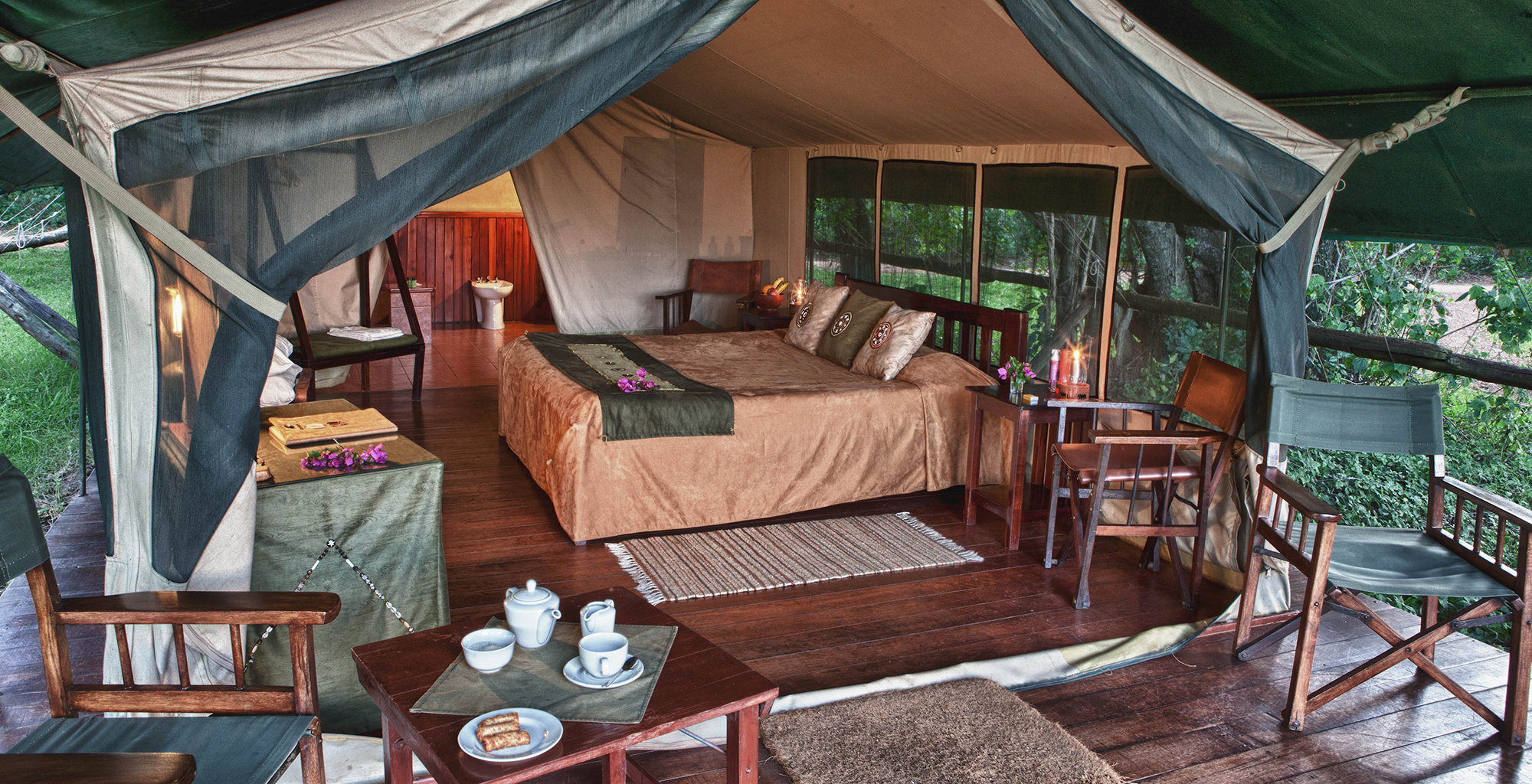
Following the budget tented camps are the safari lodges in Masai mara. Most of the luxury family safari lodges in the park are located right inside the Masai mara game reserve. These lodges tend to be sighted in very scenic areas of either deep acacia forest, high on a cliff with a view or around the mara river bends and curves. These Masai mara safari lodges offer the most comfortable and homely stay for an affordable Masai mara family vacation with young children as they have large grounds. These family friendly mara lodges also feature family rooms with interconnecting doors and dinning and seating rooms. They also offer the most secure family safari lodge environment in Kenyan parks. The children friendly Masai mara family lodges also offer nanny services and animators that will keep your kids occupied at the lodge.
Masai mara family lodges also come with business centers, a health spa and sports bars to cater for Dads and Moms that want to be pampered while on an African safari in Kenya. For the senior citizens, a lot of these lodges have provided for ramps in place of stairs in all common areas as well as support bars in washrooms and wet areas. Most of these lodges also provide free Wi-Fi for you to be able to upload your safari pictures in the evenings. You also get camera and phone charging power sockets on the walls in your room to make sure you never run out of power while on a game drive. The food in these mara safari lodges is A+ with most meals being a buffet catering for all dietary regimens including Vegetarians.
These Masai mara wildlife lodges have an average of between 50 to 100 rooms and this means they are very large and can be crowded at peak seasons. The cost of staying in these lodges ranges from $170 a night to $ 350 per night per person. An example of some of the best family and children friendly lodges in Masai Mara include Mara Serena game lodge, Sarova Mara Game camp, Mara Sopa Lodge, Mara Simba Lodge, Keekorok Mara lodge, Ashnil Mara Camp among others.
The most expensive and luxurious accommodation in Masai mara are the high-end exclusive camps. These are few and located in remote areas within the Masai mara game reserve. These are small camps that offer exclusivity and luxury with the largest of them having only 10-12 units. The idea here is to offer the best luxury to a very few couples or individuals who can dine and wine on a single dining table hosted by the resident managing couple. The tents are located great distances from each other to offer privacy.
The furnishing f these tents is high end with rustic beds and architecture reminiscent of the colonial hunting expedition’s luxuries of the early 20th century. You will have open showers or open-air bath tubs with a view to a river and the tents are mostly completely open on the front end. When resting in your tent, you feel like you are in the Masai mara entirely alone. They want you to feel like you are all alone, left to enjoy the Masai mara wildlife, nature and views all by yourself but pampered with extreme luxurious furniture, linen, furnishing and ambience. Some even offer you a personal plunge pool or a Jacuzzi right outside your tent frontage. The price you pay for a night in these high-end luxury camps starts from $700 to over $1800 a night. Most of the safaris organized to these high –end luxury camps in Masai mara are mostly 3, 4,5,6,7 day air safaris by scheduled flights or charter.
An example of top end luxury tented camps in Masai mara Kenya include Governors camp, Mahari pazuri, Ollare Kempinski camp, Batelluer camp, Cottars camp 1920 among others.
4. The Masai People of the Mara – Make a Budget Tour to a Masai Village in the Mara
You cannot mention Masai mara safari without mentioning the people that have safe guarded this ecosystem for ages. These are the people that have lived side by side with this wildlife and conserved them for us to enjoy. The Masai people are nomadic pastoralists that depend on cattle for their livelihood. It is the predominant community that surrounds the Masai mara game reserve as well as the Serengeti national park in Tanzania.
Masai people have retained their traditions for ages and they still wear the red colored shawls around their body. They have mastered the art of living in the wilderness and among the most dangerous wildlife peacefully. Traditionally, a Masai warrior was inducted to the adulthood through an initiation ceremony that involved killing of a male lion. Although such practices no longer exist, it does show how brave and War some these community has been over the years. The Masai warriors were among the most feared among old Africa communities. They have retained most of the less injurious traditions, which they still practice to date and are more than happy to share with you in your next visit.
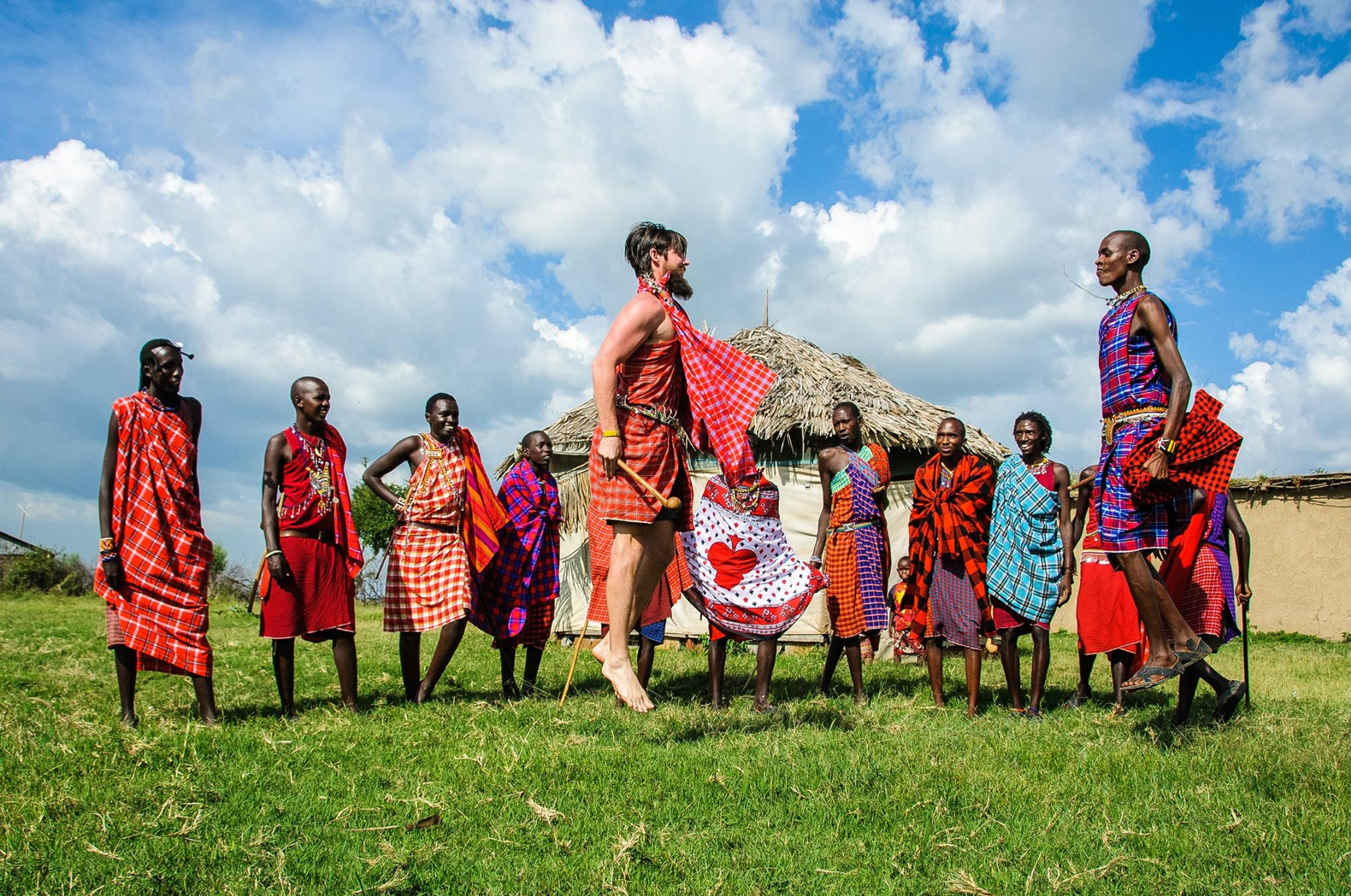
Masai community own and occupy the vast lands that surround Masai mara game reserve. Infact, the land owned by the Masai is many times larger than the actual area of the Mara reserve. Since there are no fences separating the mara and the community lands, the wildlife are free to roam in and out of the park. The Masai lands therefore become dispersal areas for the animals especially in drought seasons. This means that the Masai literally live inside a wildlife area; and that calls for grit.
The community has built settlements called Manyattas and that dot the landscape in their characteristic rounded shapes. The village will usually be fenced with thorny branches of the acacia trees to keep away the lions and other animals at night. Their houses form a circle within the thorny fence and in the middle of the houses is the livestock kraal, which is also surrounded by a thorny fence.
These Masai villages in the mara are open to visitation by tourists that come for game viewing in the park. For a small fee, visitors can come to the villages and learn the traditional Masai culture and traditions. First, to welcome you are Women with their dances and white smiles. The men will show you to do the Ajuma dance, which is some kind of levitational hops, which seem to defy gravity. This jump dance of the Masai and their heavy bass singing is the hallmark of all activities in the village.
They will also teach you how to throw a traditional spear at a target and make fire using just two stick and some dry elephant dung. In some villages, you can even go for a walking safari among the wildlife, although this is offered strictly outside of the park boundaries. Later, you may buy some souvenirs from their village Masai market for some African jewelry, beadwork, carvings and footwear. The mood is merry and fun as you dance and get to learn how they all live among the game with a big smile and warm hearts.
5. Bird Watching in Masai Mara on Budget or Lodge Safari
The mara is home to more than 400 species of birds and has some wetlands, which form Important Bird Areas. Many birders also visit the park for bird watching as opposed to game viewing. The Masai mara game reserve has 3 main habitats that support different types of birds namely the savannah grasslands, the forest areas and the wetland swamps. Each of these areas supports different types of birds with the bigger birds of prey occupying the savannah grasslands.
The fish, frogs and water organisms eating birds are mostly found wading in the swamps or resting up on trees near the wetlands. The African fish eagle is one such bird that waits patiently with its acute vision trained on the water below. On seeing a fish or snake in the water, it will swoop down at tremendous speed and wing control to grab the it off the water and perch on a tree branch for its meal. The herons and hadada and sacred ibises florick the edges of the swamps looking for the frogs and other water insects.
The tawny eagles are large and scout he savannah in search of antelope fawn, hares, snakes and rats to grab. The secretary bird and kori bustards simply walk the plains in their majestic gait looking for snakes to kill and eat…what a diet.
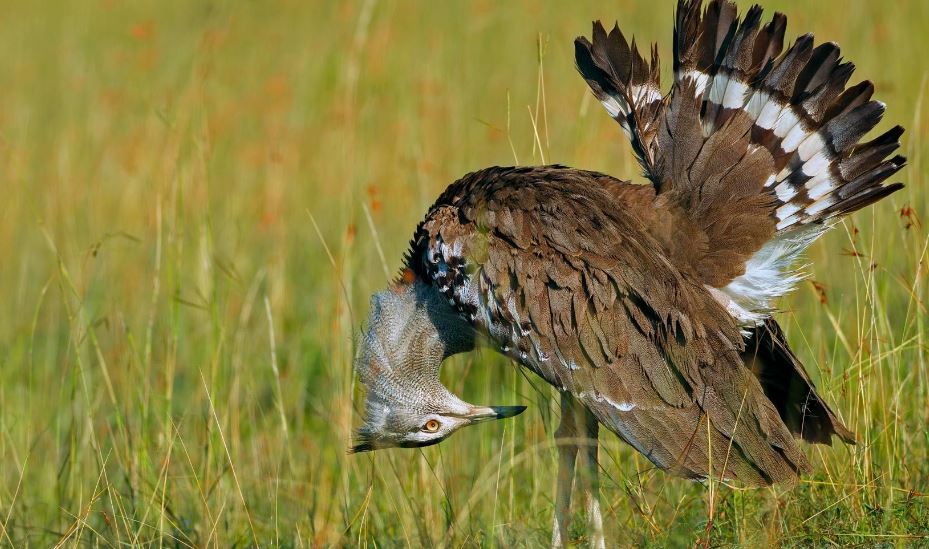
The-bustard-of-mara
In the air making circular motions are the vultures that will circle a carcass and drop to the ground to wait their turn to finish off the remains. The vultures are very patient and will wait on the bit cats and hyenas to finish the meat on bone and they come in in their hundreds to clean off the scene with their sharp curved beaks.
The large ostriches can be seen walking the plains and some with their chicks in tow. They are wonderful to watch and are in plenty throughout the grasslands. The African crested cranes are always in pairs near wetlands as they florick with the bright colors. If you are luck you may form, the audience of a male crested crane doing the dance of his lifetime to woo a female…it doesn’t always end well for the dancer.
Sometimes you will get a blacksmith plover having nested in the middle of the road near a swamp. He makes a lot of noise as you approach as if to alert you that she has her nest right on the road. It will be up to you to respect her right of way and veer off the road to avoid damaging her next.
A small kingfisher is perched on a thorn tree near the swamp with a fish twice its length inside its mouth. You are sure that if it swallows the fish head first, the head is going to come out its rear end before the fish’s tail gets into its mouth…but nature is magical and now you see the fish and next minute you don’t!!!
If you take your time and spend a full day watching birds in Masai mara, you will be amazed at how much you can learn in these plains. You will be astounded at how much you have missed by not giving time to watch the birds and their concert.
As if you haven’t seen enough of birds, you round a corner and you meet this old buffalo male. Nothing is unusual with him as he trots lazily across the plains. All but the fact that there is an ox-pecker bird that is busy building its nest using wet mud, right in the middle of his horns. The buffalo has finally given her the consent to become a tenant on his horns, if that will allow him report to tick picking duty on time. Sort of like taking residency on the company grounds sort of thing. Rent free.
Such is the fun in watching birds in Masai mara in a 3 or 4-day bird watching budget safari itinerary. You will definitely get help from our resident bird guides to identify and tick off over 250 species of birds in the 2 nights birding tour in Mara.
6. What to Wear for Masai Mara Safari
Masai mara game reserve has a large di-annual temperature range. This means that the nights can be extremely cold and the day can be brutally hot. You will therefore need to be prepared either way for the cold and the heat of the day. You can pack some light t-shirts and shorts for the daytime. A straw hat or cap is advisable for the sun when you have to step out of the vehicle. East African sun has high dose of ultra violet rays, which are harmful. Long sleeves and khaki trousers might actually be advisable if you will going for a walking safari to avoid the sun and cuts from grass and sticks.
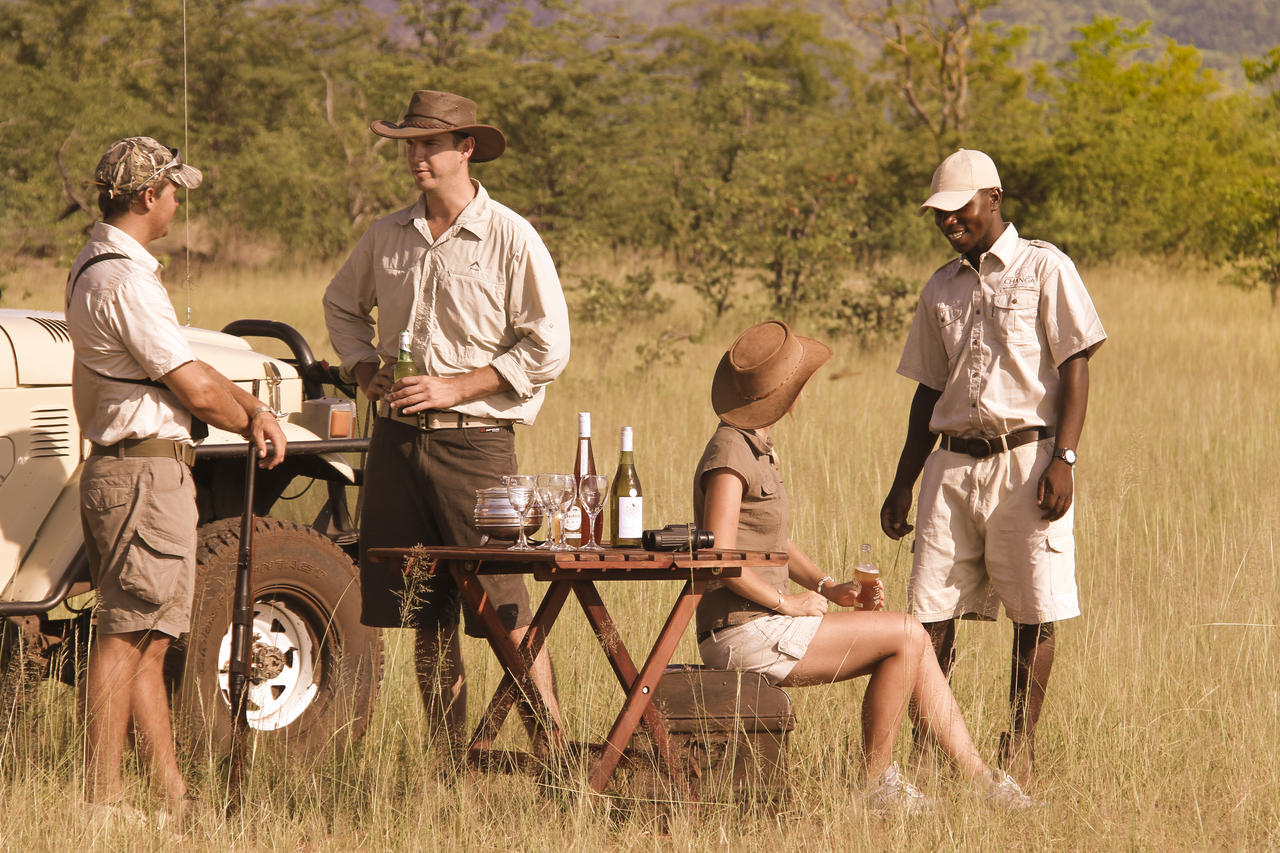
For the morning game drives carry a shawl or buy one of the Masai shukas/kikoi, they are great for covering yourself by creating a layer of warm air around your body in the dawn game drives. It can be extremely chilly. At night, the lodges provide enough warm beddings but tents can become very cold especially in the July winter in Kenya. Carry some warm fleece jacket that you can wear in the evenings and even sleep in at night. If you wish, you can carry an extra blanket just to be sure especially in the months of June-august.
Your footwear need to be flat soled with good grip for walking. Open shoes are discouraged due to injuries and snakes when you have to walk in the tall grass.
7. Bugs and Insects in Masai Mara
Masai mara is a malaria area and especially during the wet season when mosquitoes are at their breeding time. Yes…it’s the wilderness and bugs and insects are part of the package you will buy into. Most lodges and camps provide you with a mosquito net for your bed but you still need to take care to avoid bites when you are around the camp.
Nairobi supermarkets sell very good pyrethrum based insect repellant in the form of a lotion or spray. So you are able to choose between both. Wearing a short has one advantage in the mara walking safaris in that you can feel as the ticks crawl up your legs. However, at the same time, your legs are exposed to cuts from grass and sticks. A trouser on the other hand protects your legs from cuts but provide the ticks a highway to your upper body.
Let me explain, ticks when fully-grown climb to the tips of grass strands waiting for the next animal to hitch a ride and feed on. If that happens to be you with your trousers, you will be removing ticks from your balls a week after the African safari. Therefore, it’s also advisable to check your Netherlands areas every evening during your shower. Ticks love it there as its warm with lots of blood flow which is their food….suckers!! I once went for a similar walking safari and I removed ticks off my Cajones 2 weeks after the walk…and the only reason you notice they are there is when you start to feel the itch….hahahaha!!
8. How Much Is The Tip To Give to Driver Guides in Masai Mara Safari
Tips are optional and dependent on the service delivered. Having said that, the salaries that these drivers are paid are hardly enough to make ends meet. Moreover, these guys guy over and beyond their call of duty to make sure that you have the greatest time in Masai mara. So it’s only fair to say thanks in the way of a good tip.
The recommended but by no way the maximum tip is $10 – $20 per day per person. So if you are 4 in a car, you can tip anywhere from $40 -$80 every day of the safari for the entire group. However, as I mentioned, tips are discretionary but recommended.
Tips in restaurants are usually standard as anywhere else around the world where its 10% of the value of the food or drinks consumed. Unless of course one is, a celebrity or a ball player and they can try to knock the waiter/waitress unconscious with a shock of a tip….
Having said that, not all standards of service deserve a tip and the decision is entirely yours to make based on the circumstances. You can decide to carry some local cash for the tips to make your work easier.
9. Where To Change Money To Local Currency
There are foreign exchange bureaus right at the airport where you can change dollars to Kshs but the rate is afew shillings less than the ones in the CBD. Therefore, you can ask your driver to take you to a forex exchange bureau for some change before the safari. This will give you some local currency to spend for your local expenses.

The exchange rate changes frequently and sometimes drastically, you can check the current Central Bank of Kenya (CBK) exchange Rates on google. The CBK rates are however estimates of the market rates and may vary by a shilling or 2. It is also fare to mention that rates at hotels are very low and you should avoid changed large amounts of money at your hotel. Your best bet are the foreign exchange bureaus which are everywhere on the streets of Nairobi.
Alternatively, you can get to an ATM and withdrawal money in local currency to spend. This is convenient but again the exchange rates you get are bank rates and they are not known to be very friendly. Your last point where you can access an ATM before going to the Masai mara is the last major town known as Narok Town. Narok is located about 100km from Masai Mara.
10. Local Currency To Carry Around For Expenses On Mara Safari
A safari package mostly includes the major elements like park fees, accommodation, meals and transport to and flo. The meals included are the buffets and rarely are drinks covered in the cost of the tour. This means that you will need extra cash to buy drinks as well as any other souvenirs that might interest you along the way. Please note that the local traders are unable to process card payments, buy can accept both Kenya shillings and us dollars. You are at an advantage if you are buying in Kenya shillings nonetheless.
On average, you can spend anywhere between Kshs 1,000 – Kshs 3,000 if you are entertaining friends. That is about $20 a day. Of course you can use much less than this if you wish. For buying souvenirs, the amount you will need will depend on what type and quantity of items you want to buy. You could budget anywhere between usd 30 – usd 100 per day if you want to do piecemeal purchases. You could opt to buy at the end of your safari on a single location but you would lose the choice of buying cheaply from vendors in rural areas like the local Masai markets in Masai mara area.
11. Yellow Fever, Covid and Malaria Prevention on Safari
Entry to Kenya requires you to have a yellow fever injection at least 2 weeks before date of travel. Kenya is classified as a yellow fever area and you are advised to check with your doctor about vaccination jab. You will be issued with a yellow fever vaccination card, which you will present on entry.
Recommended immunizations before coming to Kenya include the below. By no means do you need all of them:
- Malaria
- Tetanus
- Typhoid
- Diptheria
- Yellow fever
- Cholera
Covid 19 travel restrictions have since been lifted for visitors to Kenya. You therefore do not need Covid vaccine certification prior to travel to Kenya. Precautions on safari like wearing of masks and use of hand sanitizer have also been relaxed since. However, it is best to practice hand hygiene while on safari like frequent watching of hands to avoid other surface borne ailments.
In the case of malaria, you are advised to make sure you start prophylactic or preventive treatment at least 1 week before travel. You should continue with the dosage during travel and a few days after return home. There is a dose given for preventive malaria treatment and your doctor is best suited to give you that advice. In the event that you arrive in Kenya and have not started the treatment, some pharmacists in Nairobi will help you start the right dose.
12. Visa Application for a Safari to Masai Mara Kenya
You will need a tourist visa if you are coming from a country that has not waivered visas with Kenya for their citizens. You can access the full list of which countries that do not need a visa to Kenya from the Kenya immigration website here: https://immigration.ecitizen.go.ke/index.php?id=6

Luckily, visa application can now be done online using the government’s portal at https://evisa.go.ke You will need to submit copies of your passport for the application and pay the requisite fee for a tourist visa at $51. (see: https://immigration.ecitizen.go.ke/index.php?id=7 )
Make sure to apply at least a week or more before departure to help you with your planning. Visas are processed depending on its urgency. This means that visas whose arrival dates are close will get priority. This means, that if you apply late for your visa, it will also be approved late and close to your travel date, which can cause uncertainty to your travel plans.
13. Transport
There are several airports and airstrips in the major cities and towns in Kenya including Nairobi, Mombasa, Kisumu, Eldoret, Nakuru, Isiolo. There are also tens of bush airstrips in the national parks, which serve the tourists visiting parks and staying in lodges in Masai mara, Amboseli, Samburu, Tsavo etc. Local or civil air services are extensive with scheduled and chattered services offered from major towns.
There is now a very reliable train service between Nairobi and Mombasa with the Standard Gauge Railway or SGR. The SGR Mombasa train takes 4 hours from Nairobi to Mombasa and is quite prompt. The western end of the railway line to Kisumu and Kampala in Uganda is still work in progress and is frequently ceased until an SGR line is built. Train travel to Mombasa through the SGR is however a lot of fun. Most of the locals use the cheaper economy class for $8 while tourists usually use the first class for $26 a ticket.
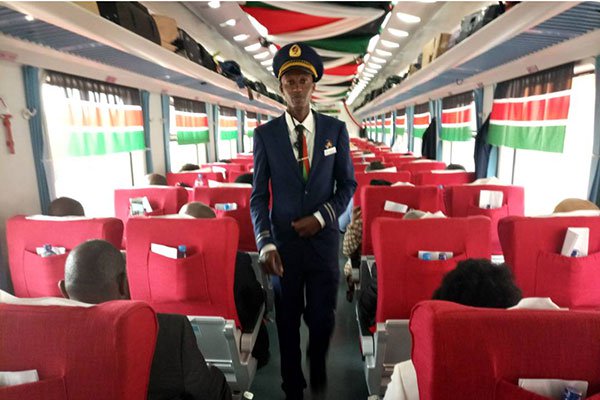
The public road transport is by means of privately owned taxis, minibuses and buses that ply the city routes as well as upcountry areas of Kenya. All routes of Kenya are well covered and these taxis can take you to any end of the country. However, make sure to negotiate the prices before boarding the vehicle as prices can be jerked at any time the conductor feels like it.
Get more details on how to book a 3 days Masai mara safari package on whatsapp +254 722 661 827 or email us on info@sojournsafaris.co.ke

